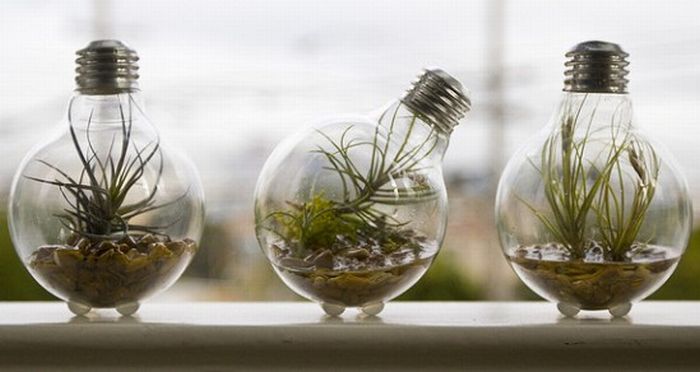|
|
Plants Art From Old Light Bulbs
|
The effectiveness of an electric lighting source is determined by two factors: the relative visibility of electromagnetic radiation, and the rate at which the source converts electric power into electromagnetic radiation.
Luminous efficacy of a light source is a ratio of the visible light energy emitted (the luminous flux) to the total power input to the lamp. Visible light is measured in lumens, a unit which is defined in part by the differing sensitivity of the human eye to different wavelengths of light. Not all wavelengths of visible electromagnetic energy are equally effective at stimulating the human eye; the luminous efficacy of radiant energy is a measure of how well the distribution of energy matches the perception of the eye. The maximum efficacy possible is 683 lm/W for monochromatic green light at 555 nanometres wavelength, the peak sensitivity of the human eye. For white light, the maximum luminous efficacy is around 240 lumens per watt, but the exact value is not unique because the human eye can perceive many different mixtures of visible light as "white".
There is various luminous efficacy and efficiency for several types of general service, 120-volt, 1000-hour lifespan incandescent bulb, and several idealized light sources.
|
|









